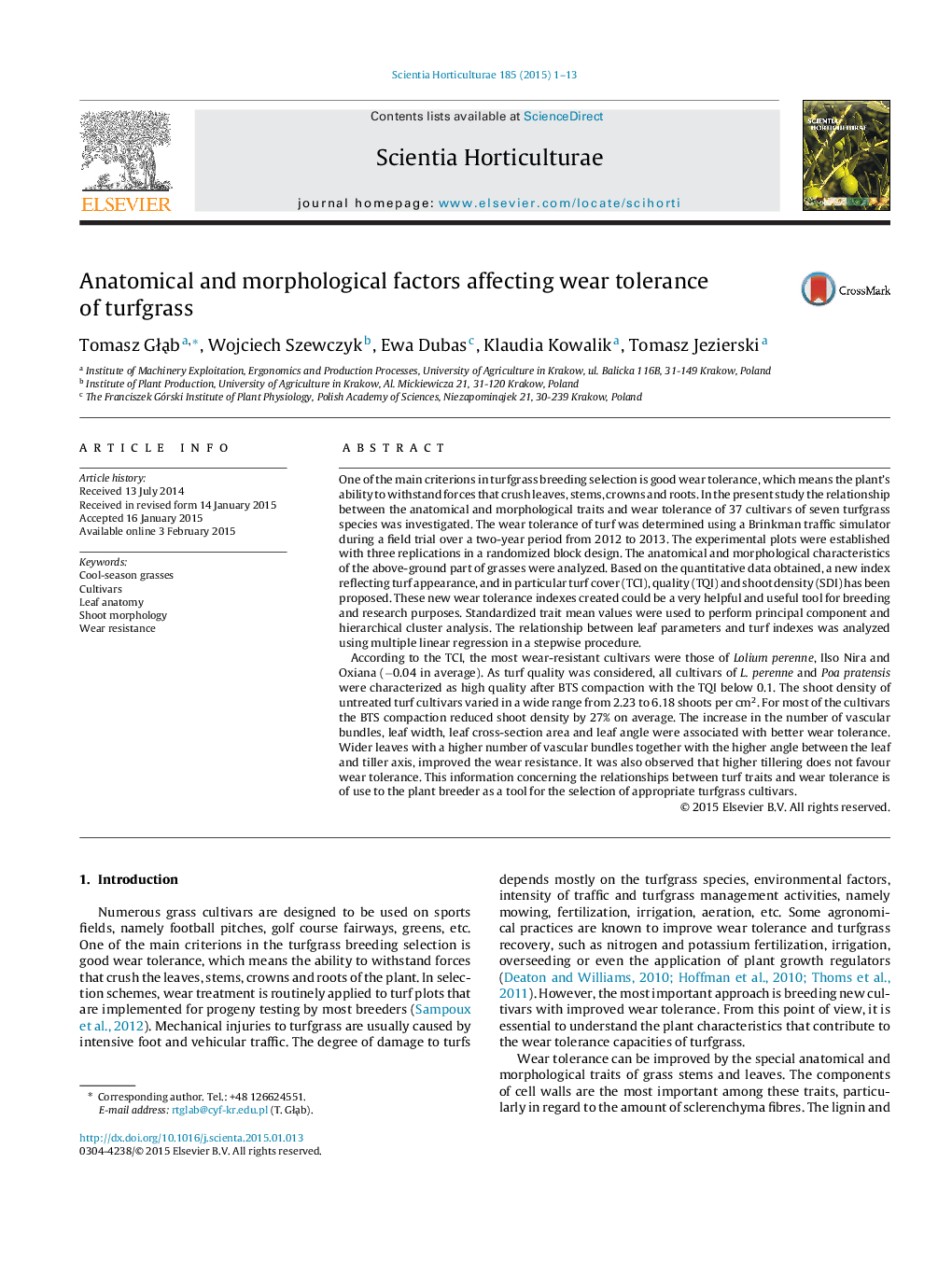| کد مقاله | کد نشریه | سال انتشار | مقاله انگلیسی | نسخه تمام متن |
|---|---|---|---|---|
| 4566486 | 1628813 | 2015 | 13 صفحه PDF | دانلود رایگان |
• High turf quality after BTS compaction was noted for cultivars of Lolium perenne and Poa pratensis.
• Higher angle between the leaf and tiller axis improve the wear resistance.
• Wider leaves with a higher number of vascular bundles increase the wear tolerance.
• Higher tillering does not favour wear tolerance.
One of the main criterions in turfgrass breeding selection is good wear tolerance, which means the plant's ability to withstand forces that crush leaves, stems, crowns and roots. In the present study the relationship between the anatomical and morphological traits and wear tolerance of 37 cultivars of seven turfgrass species was investigated. The wear tolerance of turf was determined using a Brinkman traffic simulator during a field trial over a two-year period from 2012 to 2013. The experimental plots were established with three replications in a randomized block design. The anatomical and morphological characteristics of the above-ground part of grasses were analyzed. Based on the quantitative data obtained, a new index reflecting turf appearance, and in particular turf cover (TCI), quality (TQI) and shoot density (SDI) has been proposed. These new wear tolerance indexes created could be a very helpful and useful tool for breeding and research purposes. Standardized trait mean values were used to perform principal component and hierarchical cluster analysis. The relationship between leaf parameters and turf indexes was analyzed using multiple linear regression in a stepwise procedure.According to the TCI, the most wear-resistant cultivars were those of Lolium perenne, Ilso Nira and Oxiana (−0.04 in average). As turf quality was considered, all cultivars of L. perenne and Poa pratensis were characterized as high quality after BTS compaction with the TQI below 0.1. The shoot density of untreated turf cultivars varied in a wide range from 2.23 to 6.18 shoots per cm2. For most of the cultivars the BTS compaction reduced shoot density by 27% on average. The increase in the number of vascular bundles, leaf width, leaf cross-section area and leaf angle were associated with better wear tolerance. Wider leaves with a higher number of vascular bundles together with the higher angle between the leaf and tiller axis, improved the wear resistance. It was also observed that higher tillering does not favour wear tolerance. This information concerning the relationships between turf traits and wear tolerance is of use to the plant breeder as a tool for the selection of appropriate turfgrass cultivars.
Journal: Scientia Horticulturae - Volume 185, 30 March 2015, Pages 1–13
